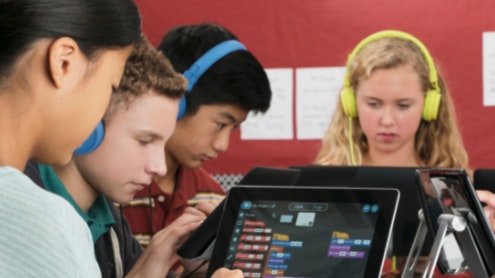Homepage
•
Learning Library
•
Blog
•
Kids Teaching Kids — With Chatbots
Expand breadcrumbs
Expand breadcrumbs
- Learning Library
- Blog
- Kids Teaching Kids — With Chatbots
- Homepage
- •
- Learning Library
- •
- Blog
- •
- Kids Teaching Kids — With Chatbots
Kids Teaching Kids — With Chatbots
By Nicole Krueger
January 25, 2022








